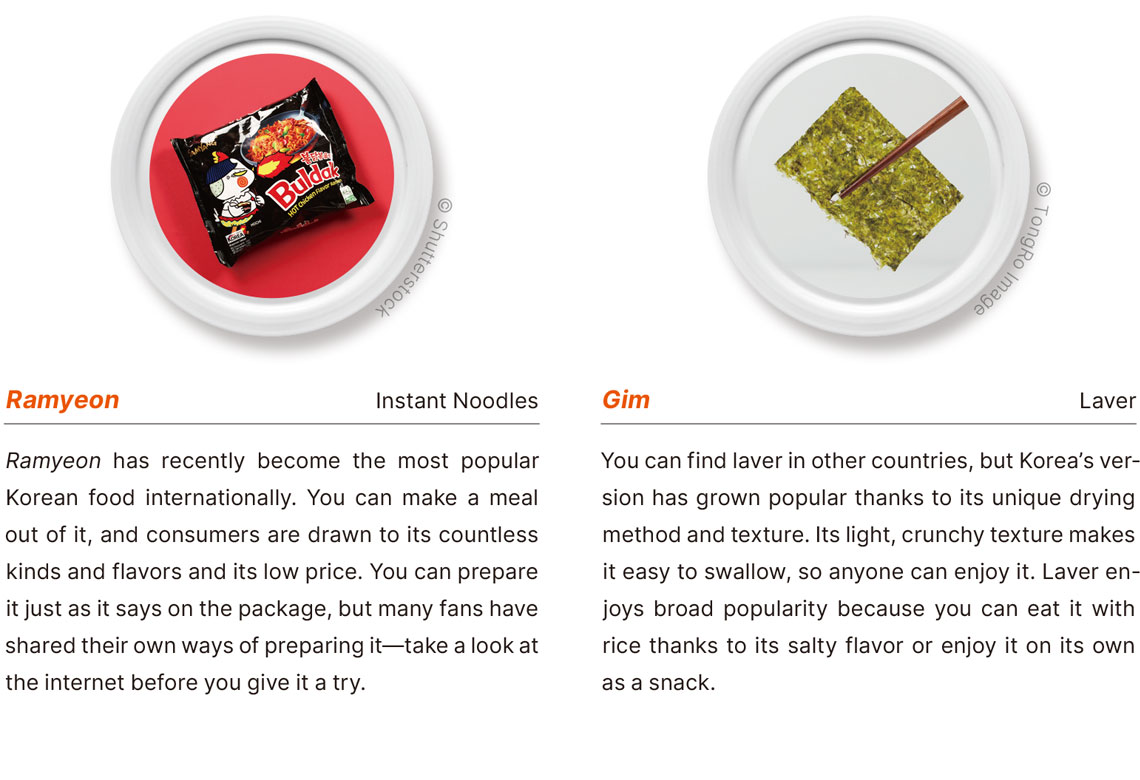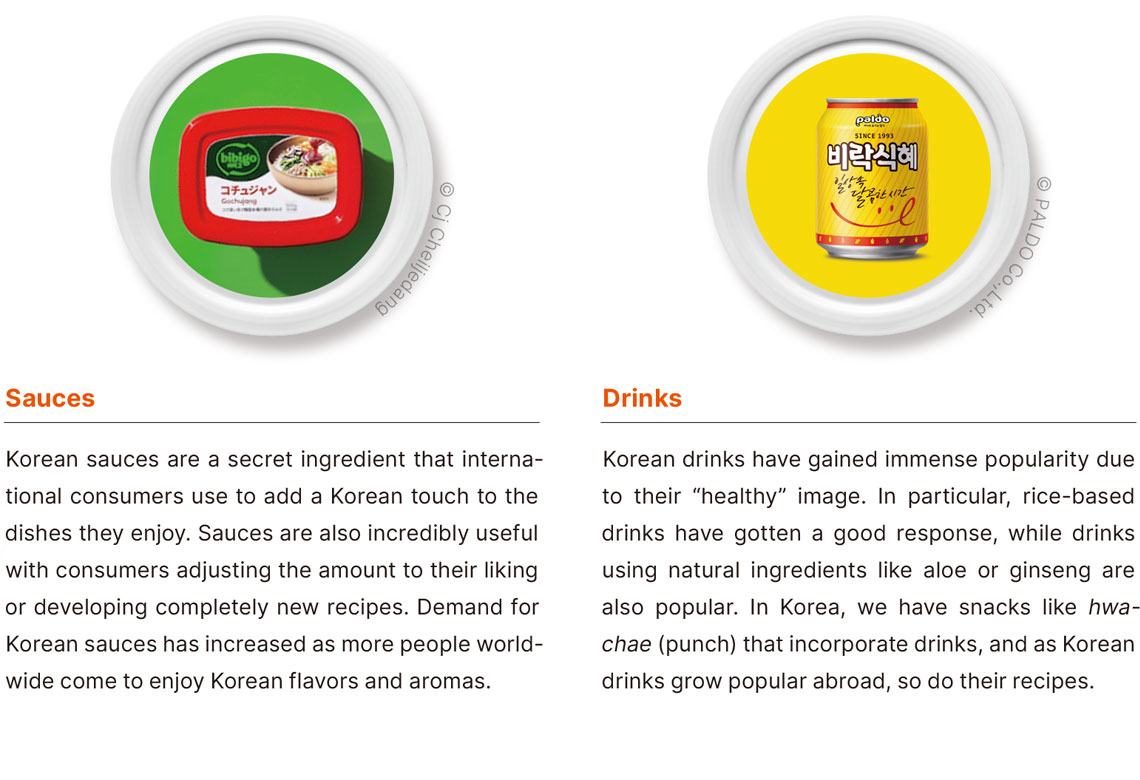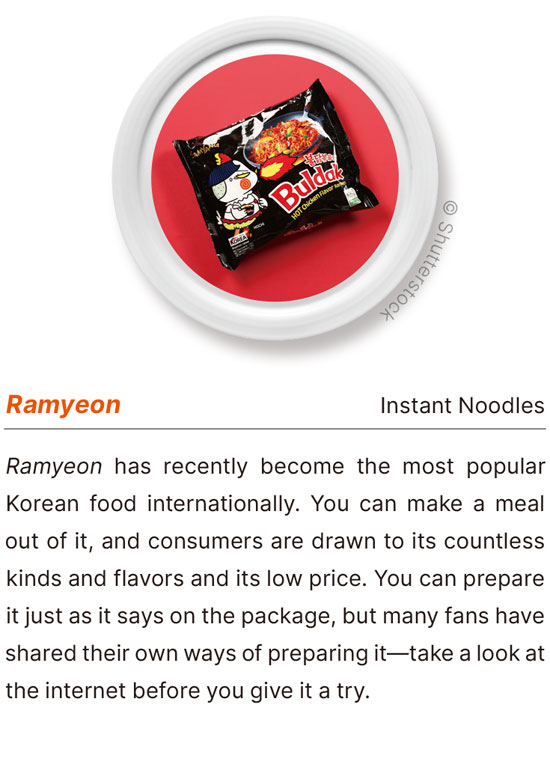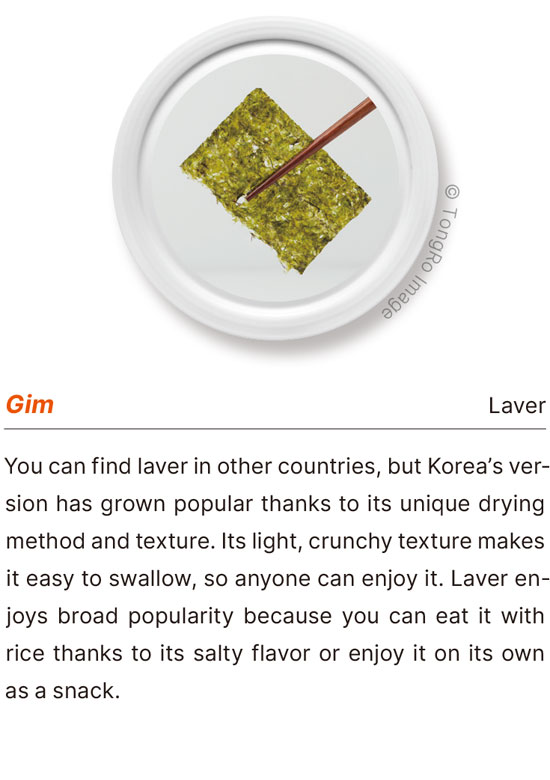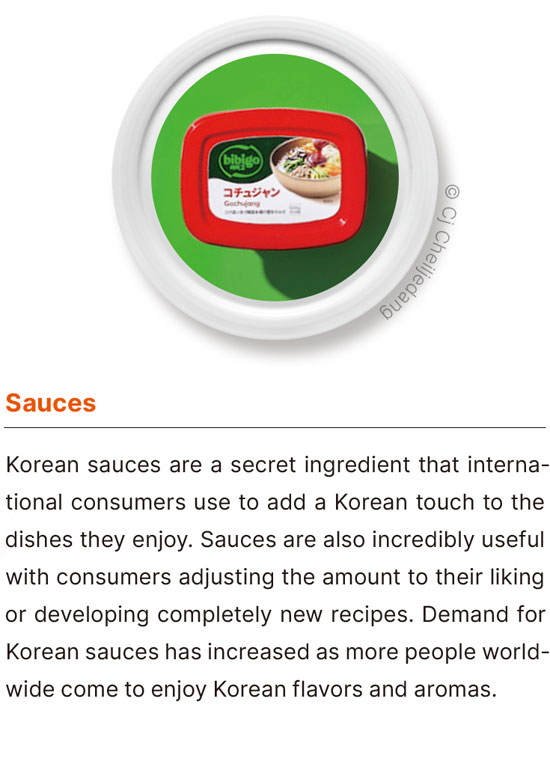The Korean food market has grown sharply over the last ten years. Even without looking at the figures, we can sense its growing impact just by observing all the Korean food products we encounter in our daily lives. This also suggests that the world consumes not only Korean dishes such as kimchi, but also instant foods, snacks and even sauces.

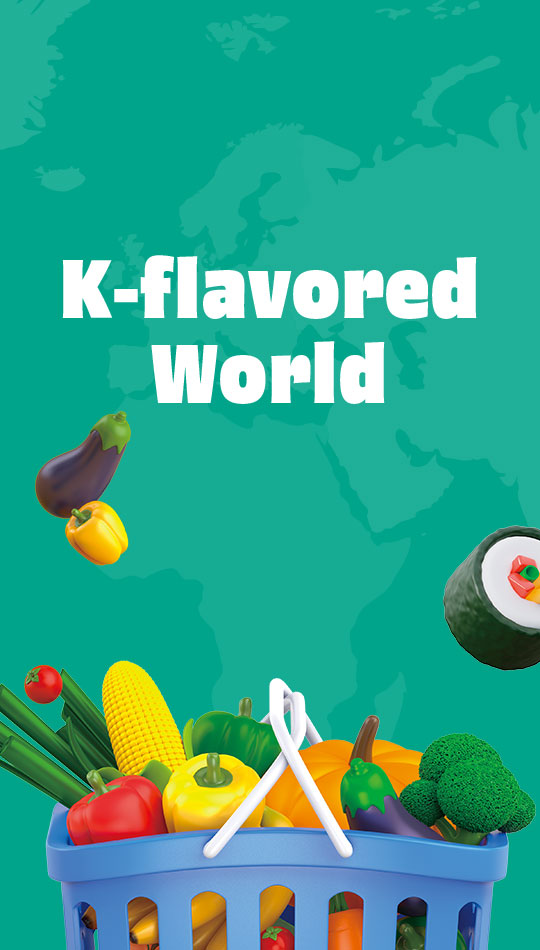
Writer. Sung Ji Yeon
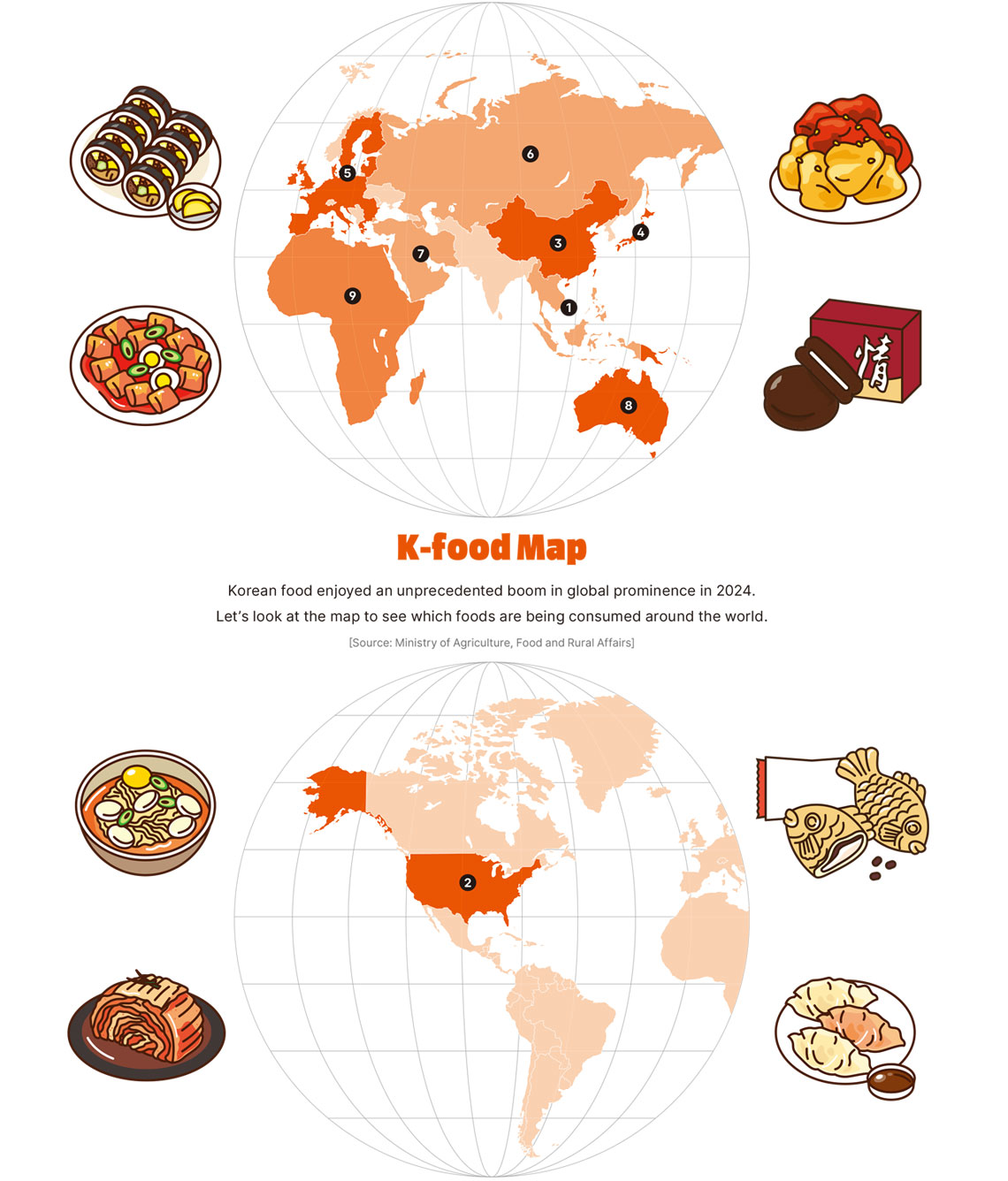
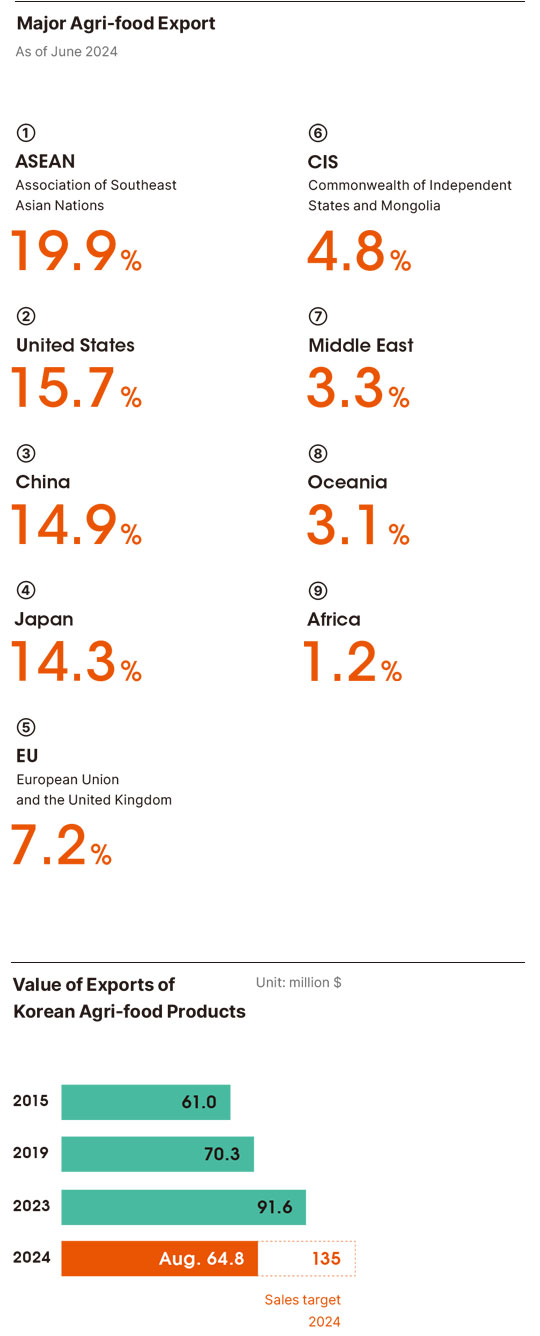
Gimbap and Tteokbokki
Earlier this year, one dish went viral through social media―gimbap. These seaweed-wrapped rice rolls filled with vegetables and meat are ubiquitous for Koreans. Yet “frozen gimbap” seems to have captured the world’s attention. At the same time, another rice-based processed food, tteokbokki (stir-fried rice cake), also joined the list of popular foods. The dish combines chewy rice cakes and a spicy sauce.
While the factors that have made each dish popular differ, a common factor is the rise of “Korean content.” These two everyday dishes have grown popular because they appeared in Korean films or TV shows, or because entertainers or influencers actively promoted them.
Gimbap also drew attention as a cheap alternative meal amid growing economic burdens in society at large. It also grew popular as a “health food” thanks to its use of healthy vegetables. Meanwhile, tteokbokki grew popular thanks to the younger generation’s appreciation of more diverse flavors, with its spiciness―something that would have hurt it internationally in the past―now a selling point.
Unique Frozen Desserts
Beyond gimbap and tteokbokki, frozen desserts also have international potential. Ice cream is a tough market to crack―the dessert wasn’t born in Korea, and plenty of global companies are making tons of hit products. However, global consumers have come to enjoy Korean frozen desserts even without active marketing, perhaps thanks to their unique flavors and characteristics.
Those characteristics include their “fruit flavors,” “chewy texture” and “bar formats.” Fruity ice creams usually come in the form of sherberts with a crunchy texture, but Korea’s fruit-flavored ice creams have a chewy texture with a rich milk flavor. They are also convenient as they come in bar form rather than soft form, so you can simply hold them as you eat.
Creative Snacks
Like frozen desserts, Korean snacks are growing popular. Korean snacks are quite approachable for people unfamiliar with Korean food because they are not complete meals, but simple pick-me-ups.
Having captured a global audience with their familiarity and lightness, Korean snacks have also won over people with their creativity. Consumers of Korean snacks appreciate how snacks of the same flavor may differ in texture, or how snacks of the same shape embody different flavors. A tiny snack may have many thin layers to maximize the crunchiness and realize salty and sweet flavors simultaneously.
What’s on the World’s Table?
Which K-foods other than gimbap, tteokbokki, ice cream or snacks are popular around the world? Let’s take a look at some foods introducing Korea to the world, which include some very well-known products.
